 Image courtesy of Stuart Miles at FreeDigitalPhotos.net Image courtesy of Stuart Miles at FreeDigitalPhotos.net Frequently we hear horror stories of projects that have gone wrong, finished late, gone far over budget (sometimes in excess of double the original estimates), poor quality, accidents, lengthy legal battles and projects that don’t do what they were supposed to do. Construction projects face numerous risks. Understanding these risks could help clients avoid, or mitigate the level of risk on their projects. Clients have different risks to the contractor, and each stakeholder in the project faces a different set of risks. Sometimes these risks are the same for a number of stakeholders – so for instance, if the project is slipping against the construction schedule this could negatively impact both the client, subcontractors and the contractor. One would consider that if the contractor loses money on the project this shouldn’t be a risk for the client, yet, if the contractor loses so much money that they become bankrupt before the project is finished then this could have a major impact for the client, who would almost certainly have to engage another contractor, at additional costs, to complete the project, which would also certainly result in a delay to the project. In addition when contractors lose money their subcontractors, employees and suppliers are also at risk. Unfortunately, many clients fail to recognise, understand, and mitigate construction project risks, which then frequently leads to an unsuccessful project. The 10 risks clients need to be aware of and take action to minimise.
Avoiding and minimising risks
This article was first published on the ClockShark website. To visit this website and continue reading the article click on the link above. Please share this post To read more about the author’s books and find out where you can purchase them visit the pages on this website by clicking the links below:
To read more about the author visit the page 'Paul Netscher' Want to contact Paul Netscher please enter your details on 'Contacts' Find out how Paul Netscher can help you
1 Comment
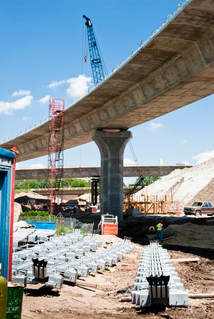 Why are government organisations (national, state, city, town and state run enterprises) often so bad at project delivery? A project isn’t just construction, it’s the complete life-cycle, from project conception, through design, planning, construction, completion, including maintenance and operation of the finished facility. At all stages of the process we see examples of spectacular failure, costing money, time and even lives. How do we define project success? For most projects success is defined by delivering a project within time and budget. Regrettably many projects fail this test. But, even a project that’s delivered on time and within budget could be a failure. Unfortunately, some projects which are seen as successful by one stakeholder are regarded a failure by another. For instance, a contractor has a successful project, they finished on time and made money, while for the owner the project was over budget and didn’t deliver value for money. A person whose house is overshadowed by a neighbouring ugly apartment building wouldn’t regard the project a success, even if the developer made a fortune building and selling the apartments. So what defines a successful project?
Reasons why many projects conceived and delivered by government organisations are a failure. There are many reasons for project failure (they don’t meet the above criteria) and these include:
Conclusion The World has many projects that are white elephants, projects that have been ill conceived, poorly planned and badly managed. Millions of dollars are wasted on inappropriate ideas, poor projects and ineptly executed projects. Unfortunately the next generation has to live with the consequences of these projects. Indeed we have to live with them! Whole communities, states and countries are hamstrung by these bad projects and the resulting debts. Politicians must be accountable. It’s time that elected officials looked beyond short term gain, greed and petty politics, rather focusing on the long term requirements of the community and country. Politicians need to take advice from honest project managers and not people and organisations that have vested interests in a particular project or outcome. They need to carefully evaluate all projects to ensure that they are the best use of public money, delivering the greatest long term benefits. They need to consider all implications of their decisions and choices, ensuring they aren’t swayed by their egos, personal agenda, or a vocal minority. They need to understand the fears and objections of all stakeholders, then not just override or ignore them, but adequately explain why these objections aren’t relevant, or adapt the project to lessen its impacts on the stakeholder. It's time for our politicians, elected officials and those in government (city, county, state or national) to stand up and take pride in their accomplishments, to be accountable for their decisions (or lack of decisions), to build a place, a community and a country that future generations will be proud of. Projects aren’t just random ideas or lines on paper, they aren’t political slogans or one-liners, they impact people and cost money. Projects require rational thought, proper planning, careful design, sound construction and expert delivery – but even more important, the project process doesn’t stop there, the completed facility has to be managed, operated and maintained, ensuring that it continues to deliver benefits safely for many years to come. Why are there so many bad government projects? Why do elected officials frequently embark on ill-conceived projects or make poor decisions? Do we have to accept bad projects? Will you hold your politicians and elected officials accountable? A question to politicians and those in administrative power – will your projects be remembered by the next generation for the right reasons? Will your projects be successful? 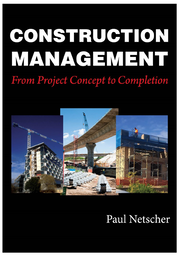 This article is adapted from information in the author’s popular books: 'Successful Construction Project Management: The Practical Guide' and 'Building a Successful Construction Company: The Practical Guide' and 'Construction Project Management: Tips and Insights' 'Construction Claims: A Short Guide for Contractors' is another of Paul's useful books. Paul has recently published 'Construction Management: From Project Concept to completion'. Paul's new book: 'Build and Renovate Your Home With Your Eyes Wide Open' is for those with little construction experience who want to build or renovate a house. It's filled with tips and suggestions to help you on your way, ensuring you avoid the pitfalls of home construction projects. These books are available on Amazon and other online book stores. Paul publishes articles regularly on LinkedIn and his website. Paul writes regular articles for other websites, gives lectures, mentors, and is available for podcasts and interviews. © 2018 This article is not to be reproduced for commercial purposes without written permission from the author. An introduction to construction variation claims for project managers video 7. What is access?23/9/2018 An introduction to construction variation claims for construction project managers video 7. What is access? What access has the client provided to the contractor? Will this access help or hinder the contractor's work? What should contractor's check when granted access?  Information in this video is from the author's books: 'Construction Claims: A Short Guide for Contractors' and 'Successful Construction Project Management: The Practical Guide' and 'Building a Successful Construction Company: The Practical Guide'. All available from Amazon in paper or ebook. An introduction to construction variation claims. Video 6 Reasons for extension of time claims18/9/2018 An introduction to construction variation claims for construction project managers Video 6 - Reasons for extension of time claims. 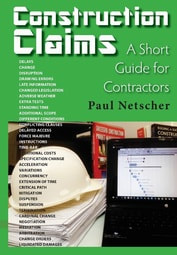 Information in this video is from the author's books: 'Construction Claims: A Short Guide for Contractors' and 'Successful Construction Project Management: The Practical Guide' and 'Building a Successful Construction Company: The Practical Guide'. All available from Amazon in paper or ebook.  Image courtesy of Stuart Miles at FreeDigitalPhotos.net Image courtesy of Stuart Miles at FreeDigitalPhotos.net In a previous post, we considered the 10 biggest construction risks facing contractors. However many of these risks can be avoided. In this post, I suggest ways that contractors can mitigate and avoid these risks.
Reducing construction project risksConstruction projects are inherently risky. The weather won’t be perfect, changes will occur, everything won’t be exactly as you expected it to be, suppliers and subcontractors will let you down. Obviously contractors can’t have a risk free project. Risks vary from project to project, both in the type and the quantum of the risk. Some projects can be inordinately risky, especially when the client and the contract document place undue risks on the contractor. Some projects are best avoided. Even the biggest and best contractors have been undone by one bad project. But, by understanding the risks on projects you can take action to limit and protect against the risk. In my next post I discuss simple actions that contractors can take to reduce and even eliminate many of these risks. What do you think are the big risks that contractors face? Have some of these risks caused your project pain 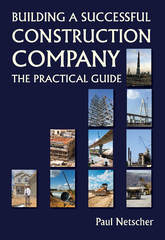 This article was first published on the ClockShark website. Please share this post To read more about the author’s books and find out where you can purchase them visit the pages on this website by clicking the links below:
To read more about the author visit the page 'Paul Netscher' Want to contact Paul Netscher please enter your details on 'Contacts' Find out how Paul Netscher can help you An introduction to construction variation claims for construction project managers Video 5 - Types of claims  Information in this video is from the author's books: 'Construction Claims: A Short Guide for Contractors' and 'Successful Construction Project Management: The Practical Guide' and 'Building a Successful Construction Company: The Practical Guide'. All available from Amazon in paper or ebook.  When you’re on a tight budget, it’s hard to invest in marketing. That’s exactly why you want ways to get the word out about your construction business that don’t cost a ton. Can you effectively market your construction company without spending a bundle? Are there free strategies that truly work? The good news is yes. So, wherever your construction business is financially, here are 10 no-cost ideas to help you promote your services to new clients!
While marketing your construction company with no money is a challenge, there’s actually more potential than you may realize. Try the ideas above to start spreading the word about your business! If you stay faithful to the process, you should start reaping results in no time.  Author bio: Shanna Mallon is a senior copywriter for Straight North, a top HVAC SEO firm in Chicago that also specializes in web development and other online marketing services. Shanna has been writing professionally online since 2007. Title image courtesy of Shutterstock. An introduction to construction variation claims for construction project managers Video 4 - Reasons variation claims are rejected. Ensure your variation claims aren't rejected. 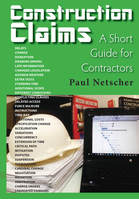 Information in this video is from the author's books: 'Construction Claims: A Short Guide for Contractors' and 'Successful Construction Project Management: The Practical Guide' and 'Building a Successful Construction Company: The Practical Guide'. All available from Amazon in paper or ebook. An introduction to construction variation claims for project managers Video 3 – why it’s important for construction project managers to be involved with formulating variation claims 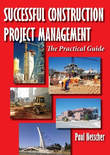 Information in this video is from the author's books: 'Construction Claims: A Short Guide for Contractors' and 'Successful Construction Project Management: The Practical Guide' and 'Building a Successful Construction Company: The Practical Guide'. All available from Amazon in paper or ebook.  Image courtesy of David Castillo Dominici at FreeDigitalPhotos.net Image courtesy of David Castillo Dominici at FreeDigitalPhotos.net Projects have many different types of risks. In fact, all projects have some risk for contractors. But, understanding the risks could help you avoid, or reduce the amount of risk. Clients may have different risks to the contractor, and each stakeholder in the project faces different risks. Sometimes these risks are the same for a number of stakeholders – so for instance, if the project is slipping against the construction schedule this could negatively impact both the client and the contractor. Unfortunately, many contractors fail to understand the project risks, or they choose to leap into a project despite the risks. Who would want to start building a bridge across a flood-prone river at the start of the rainy season, or work for a client that’s known to fight lengthy legal battles with their contractors? Indeed, contractors are often a very optimistic lot, always expecting the project to turn out well, even when it’s fraught with risks and probably destined to failure from the start. Then when the proverbial hits the fan, they console themselves by blaming everyone except themselves. In this article, we will look at the biggest risks that contractors face and how to minimise or avoid them. The 10 risks contractors should avoid or minimise:
 This article was first published on the ClockShark website. To visit this website and continue reading the article click on the link above. Please share this post To read more about the author’s books and find out where you can purchase them visit the pages on this website by clicking the links below:
To read more about the author visit the page 'Paul Netscher' Want to contact Paul Netscher please enter your details on 'Contacts' Find out how Paul Netscher can help you |
Archives
June 2024
Note: We welcome genuine comments, especially comments that add additional information to the subject matter in the article. We however reserve the right to remove inappropriate comments, which includes comments that have nothing to do with the subject, comments that include inappropriate language, and comments that are an advertisement for a product or company, or which include an advertising link. Comments must be in English. We will not enter into discussion on why a particular comment was removed.
CategoriesCopyright 2016 - The attached articles cannot be reproduced for commercial purposes without the consent of the author.
The opinions expressed in the attached articles are those of the writer. It should be noted that projects are varied and different laws and restrictions apply which depend on the location of the contractor and the project. It's important that the reader uses the supplied information taking cognisance of their particular circumstances. The writer assumes no responsibility or liability for any loss of any kind arising from the reader using the information or advice contained herein. "I have what I consider some of the best books on construction management."
Books are available from: Amazon.com Amazon.co.uk takealot.com kalahari.com Amazon.in Amazon.de Amazon.fr Amazon.it Amazon.com.au Powell's Fishpond uread bokus Amazon.ca Amazon.es Other retail stores Available in paperback or on Kindle "28 YEARS OF CONSTRUCTION PROJECT MANAGEMENT EXPERIENCE, DEVELOPING SUCCESSFUL CONSTRUCTION PROJECT MANAGERS AND BUILDING SUCCESSFUL CONSTRUCTION COMPANIES"
|
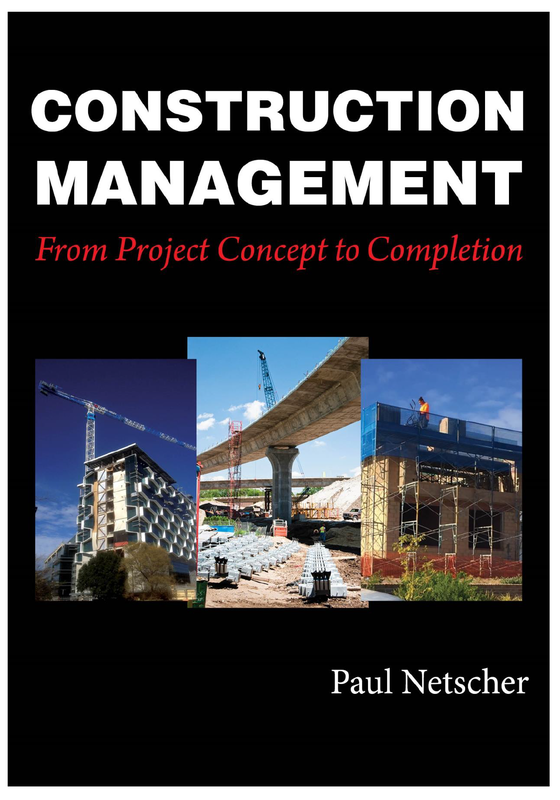
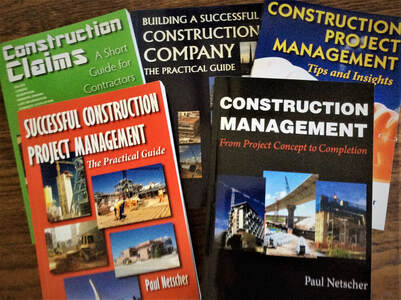

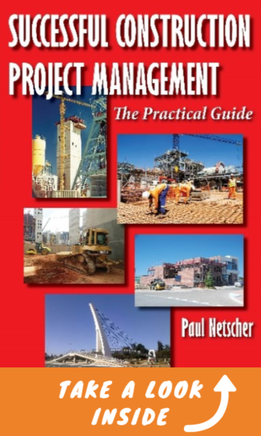


 RSS Feed
RSS Feed




